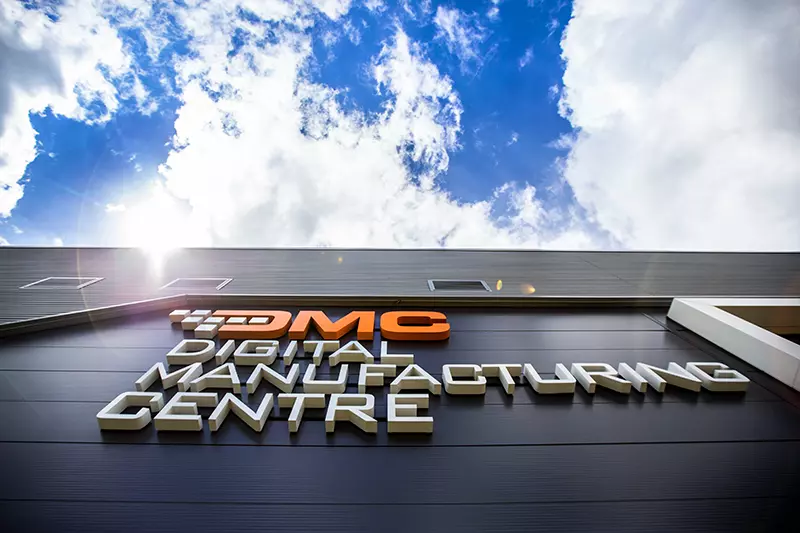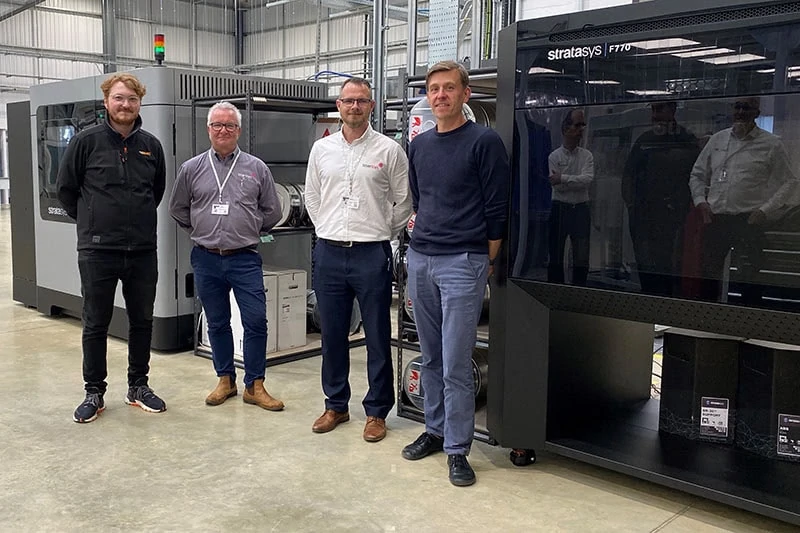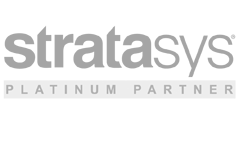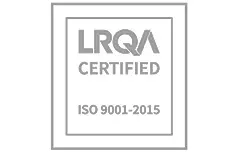
Laser Lines provides “exceptional support” to additive manufacturing facility the DMC
The Digital Manufacturing Centre (DMC) is a wonderful new production facility dedicated to Additive Manufacturing (AM), based at Silverstone Park. We spoke to CEO Kieron Salter and COO Nigel Robinson about their experiences setting the facility up, how they are persuading more businesses to switch their production to AM and what the future holds.
The DMC’s new facility opened in July 2021. How is it going?
Since our opening, we have moved from strength to strength. While commercial additive manufacturing (AM) is still a relatively novel concept within the UK’s most advanced industries, we are working closely with companies and organisations to highlight what is possible with modern AM.
With the next Formula 1 season around the corner and a number of exciting automotive projects in the works, machines at the DMC are running non-stop. That is alongside projects in space, aerospace, defence and other advanced sectors.
What is the DMC’s vision and how is it putting this into practice?
Our vision is to help companies operating at the forefront of their industries realise the disruptive potential of additive manufacturing through the use of leading-edge technology, connectivity and exceptional engineering design. To achieve this – alongside our commercial ambitions – we work closely with machine and equipment suppliers and have a dedicated in-house engineering team.
First and foremost, we are an engineering-led commercial AM supplier that has the experience, expertise and machines to provide high-performance, end-use ready parts within short lead times. It really is a step-change in manufacturing capability within the UK supply chain.
How much of a difference does it make for customers seeing live jobs – particularly if they are coming from a more traditional setup?
While almost everyone within the industries that we work is aware of AM, they may have the wrong impression. Like the wider public, they may take the view that it is something fun for hobbyists to do on the weekend without realising the incredible capability that these rapidly evolving technologies and materials have to offer.
To that end, having potential customers or industry representatives visit the DMC has proved time and again to leave a significant and lasting impression. While we like to think that AM complements – rather than replaces – traditional manufacturing, it does offer incredible possibilities.
What are the most common questions you get asked?
“That’s great but is it relevant to my industry?” is a question we often get. We are finding that a large part of our role in establishing an advanced AM supply chain in the UK is about education. As with all large changes and shifts in technology, understanding how and why it is advantageous is half the battle.
Fundamentally, AM allows you to make parts that would be impossible to make via conventional means, within shorter turnaround times, with lower weight and without the need for tooling. On the flip side, AM is also ideal for rapidly producing jigs, fixtures and tooling for things like advanced composites. So, really, AM is relevant to almost every advanced industry, from space to energy, automotive to MedTech.
How big is your team? How do you recruit them?
Our team has been continuously expanding since the DMC launched. It currently sits at 20, divided between applications engineers, machine operators, business support functions and the leadership team. We have a specialist recruiting agency, Hernshead Recruitment, and post about roles on social media.
Which industries do you work with?
We like to say that the DMC is ‘sector agnostic’ meaning that we are open to exciting and new applications of AM and do not limit ourselves in this way. To illustrate the point, we have worked on Formula 1 and rocket parts while also producing high-end sculptures in titanium. Sectors that we would best serve include space, aerospace, defence, motorsport, automotive, medtech, marine and energy.
What are the best pieces of kit installed? The really ‘wow’ products?
Having the right technology to solve customer challenges is what makes great kit. We have various technologies such as the Stratasys FDM F900 and the new F770 by Stratasys. The SLA Neo 800, also produced by Stratasys, has been applied for tooling and wind tunnel models.
Our other technologies include some excellent multi-laser metal machines, including the full post-processing suite and large volume SLS technology.
What are your plans for 2022?
For 2022, we are eager to expand our customer base and investigate AM applications in new and exciting sectors.
What’s it like working with Laser Lines?
Working with Laser Lines has been one of the most fruitful and critical partnerships to the DMC’s success so far. It is through Laser Lines that much of our polymer capabilities have been established and we have been able to acquire industry-leading machines faster than competitors while receiving exceptional ongoing support from the dedicated Laser Lines team.
What is your take on Industry 4.0?
The principles of Industry 4.0 and connectivity are something we have actively embraced from the outset. This has laid the groundwork for the eventual implementation of AI and machine learning, with each step of the process chain tailored to suit each individual part and its production history.
At the same time, the entire facility has automated building control thanks to Beckhoff, including heating, cooling, shading, energy, lighting and ventilation. In practice, Industry 4.0 allows for much greater oversight and part quality improvements while reducing operator burden.
What are the biggest misconceptions about additive manufacturing?
That the technology is not yet mature enough to make production parts for applications within the likes of aerospace or automotive. With each visitor that walks through our door, we are changing these views. Despite being a commercial manufacturing business, we are linking up with educational institutions and industry organisations to highlight the incredible capabilities of modern AM.
What applications can save the most time and money from additive manufacturing?
With additive, you have to think of the entire costing, rather than just the piece part price. Some companies discount tooling as a cost against the part but to truly understand the full cost of development piece part we have to understand the lifetime piece part price. Additive then starts to look very attractive.
What do you wish you could do with AM that you can’t currently? When do you think this might be a possibility?
It is all about the reduction of the piece part cost. Machines that can maximise productivity and, therefore, reduce piece part cost, can open up more volume manufacture and further opportunities in our key target sectors. Continuous evolution within the AM sector will increase its relevance and importance as a mainstream manufacturing method.
If you want to find out more about how additive manufacturing can transform your production workflow, give us a call on 01295 672599 or email [email protected] and speak to one of our experts.










